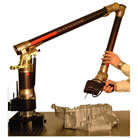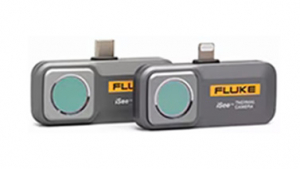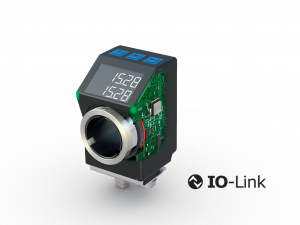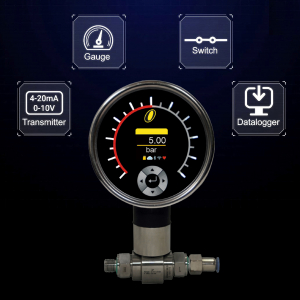NVision Scanners Provide Crucial Evidence
22nd June 2010
Source:
NVision, Inc

Materials Analysis, Inc., has used NVision’s non-contact MAXOS measurement system and HandHeld Scanner to provide critical assistance in a number of recent product liability cases. “The high levels of accuracy provided by non-contact scanning can often rule out hypothesized causes of accidents. In one case they even served as a benchmark to prove that a defect was too small to be adequately documented, preventing the evidence from being irreversibly altered by unnecessary sectioning,” said Mark Allen Lewis, Staff Engineer for Materials Analysis. “Another key advantage of scanning is the ability to quickly generate electronic solid models that are much easier for non-technical people to visualize than blueprints.”
The HandHeld scanner is a portable device that is capable of capturing 3D geometry from components of virtually any size. It is attached to a mechanical arm that moves about the object, freeing the user to capture data rapidly and with a high degree of resolution. The MAXOS uses a proprietary non-contact probe consisting of a concentrated light that collects individual points at a rate of 100 per second, many times faster than a CMM. The MAXOS provides accuracy of +/- 0.0004 and a resolution between measured points down to 0.0002 on this project. The system can be provided with a resolution as low as 0.00001.
In a typical case, the defect that had caused a critical component to break and bring down an airplane was visible under a microscope. But the defect was so small that it was impossible under visual examination to determine its three-dimensional geometry with enough certainty to stand up as evidence in court. If this defect was an inclusion in a casting this would indicate a manufacturing defect. In this case it would likely be shaped like a stringer or half-ellipse. On the other hand, if the defect was a corrosion pit that had occurred long after manufacturing, and had not been properly addressed the last time the aircraft was serviced, it would most likely be hemispherical in shape.
Materials Analysis contacted NVision’s Engineering Service Division for assistance. NVision techicians examined the defect with the MAXOS and HandHeld Scanner and captured the defect’s complete geometry, then generated a point cloud consisting of the coordinates of individual points. The technicians used software that comes with the scanner to convert the point cloud to a polygon mesh. Then they used reverse engineering software to convert the polygon data to a surface model. They exported the surface model in the STEP format and imported it into computer aided design (CAD) software where they converted it to a solid model. “The solid model clearly showed that the defect was hemispherical and was therefore caused by a servicing problem rather than a manufacturing defect,” Lewis said. “Our client was excused from the case and avoided what otherwise might have been an expensive settlement.”
In another product liability case involving an airplane crash, an important element of the plaintiff’s theory on what had caused the crash was based on the idea that a component on the aircraft lacked a tiny indentation that would have indicated that it had engaged another component. Plaintiff’s experts had performed laser scanning of the part in question and provided the raw point cloud data. “NVision converted the point cloud to a surface model that clearly showed the indentation was present, though it was invisible to the naked eye,” Lewis said. “Their work allowed us to use the plaintiff’s expert’s own data to support our position and was instrumental in helping our client settle the case for a relatively small amount of money.”
In yet another case, the plaintiff wanted to cut up an important piece of evidence to analyze its interior, despite the fact that the point of failure was on the surface of the part. “Their purpose, in my opinion, was to expose tiny imperfections that are present in any casting with the belief that they would make the part appear faulty,” Lewis said. “The question before the court was whether the feature at the fracture origin could be so accurately modeled that its destruction in the cutting process would not destroy important evidence. Since non-contact scanning is the most accurate method of reverse engineering that we know of, we sent that part to NVision to see if they could accurately reproduce this tiny feature. They said they could not and based on their findings we won a motion that prevented the evidence from being destroyed.”
In a typical case, the defect that had caused a critical component to break and bring down an airplane was visible under a microscope. But the defect was so small that it was impossible under visual examination to determine its three-dimensional geometry with enough certainty to stand up as evidence in court. If this defect was an inclusion in a casting this would indicate a manufacturing defect. In this case it would likely be shaped like a stringer or half-ellipse. On the other hand, if the defect was a corrosion pit that had occurred long after manufacturing, and had not been properly addressed the last time the aircraft was serviced, it would most likely be hemispherical in shape.
Materials Analysis contacted NVision’s Engineering Service Division for assistance. NVision techicians examined the defect with the MAXOS and HandHeld Scanner and captured the defect’s complete geometry, then generated a point cloud consisting of the coordinates of individual points. The technicians used software that comes with the scanner to convert the point cloud to a polygon mesh. Then they used reverse engineering software to convert the polygon data to a surface model. They exported the surface model in the STEP format and imported it into computer aided design (CAD) software where they converted it to a solid model. “The solid model clearly showed that the defect was hemispherical and was therefore caused by a servicing problem rather than a manufacturing defect,” Lewis said. “Our client was excused from the case and avoided what otherwise might have been an expensive settlement.”
In another product liability case involving an airplane crash, an important element of the plaintiff’s theory on what had caused the crash was based on the idea that a component on the aircraft lacked a tiny indentation that would have indicated that it had engaged another component. Plaintiff’s experts had performed laser scanning of the part in question and provided the raw point cloud data. “NVision converted the point cloud to a surface model that clearly showed the indentation was present, though it was invisible to the naked eye,” Lewis said. “Their work allowed us to use the plaintiff’s expert’s own data to support our position and was instrumental in helping our client settle the case for a relatively small amount of money.”
In yet another case, the plaintiff wanted to cut up an important piece of evidence to analyze its interior, despite the fact that the point of failure was on the surface of the part. “Their purpose, in my opinion, was to expose tiny imperfections that are present in any casting with the belief that they would make the part appear faulty,” Lewis said. “The question before the court was whether the feature at the fracture origin could be so accurately modeled that its destruction in the cutting process would not destroy important evidence. Since non-contact scanning is the most accurate method of reverse engineering that we know of, we sent that part to NVision to see if they could accurately reproduce this tiny feature. They said they could not and based on their findings we won a motion that prevented the evidence from being destroyed.”
Similar articles
More from NVision, Inc
- NVision's Consulting and Engineering Services Improve Fracking Parts 4th November 2014
- Robots Blaze New Path for Glaze 16th April 2013
- NVision Launches New Project Portal for Clients 24th April 2012
- NVision Helps Reverse Engineer Optical Retailer's Store Display, Enabling Millions in Annual Sales 12th December 2011












Write a comment
No comments